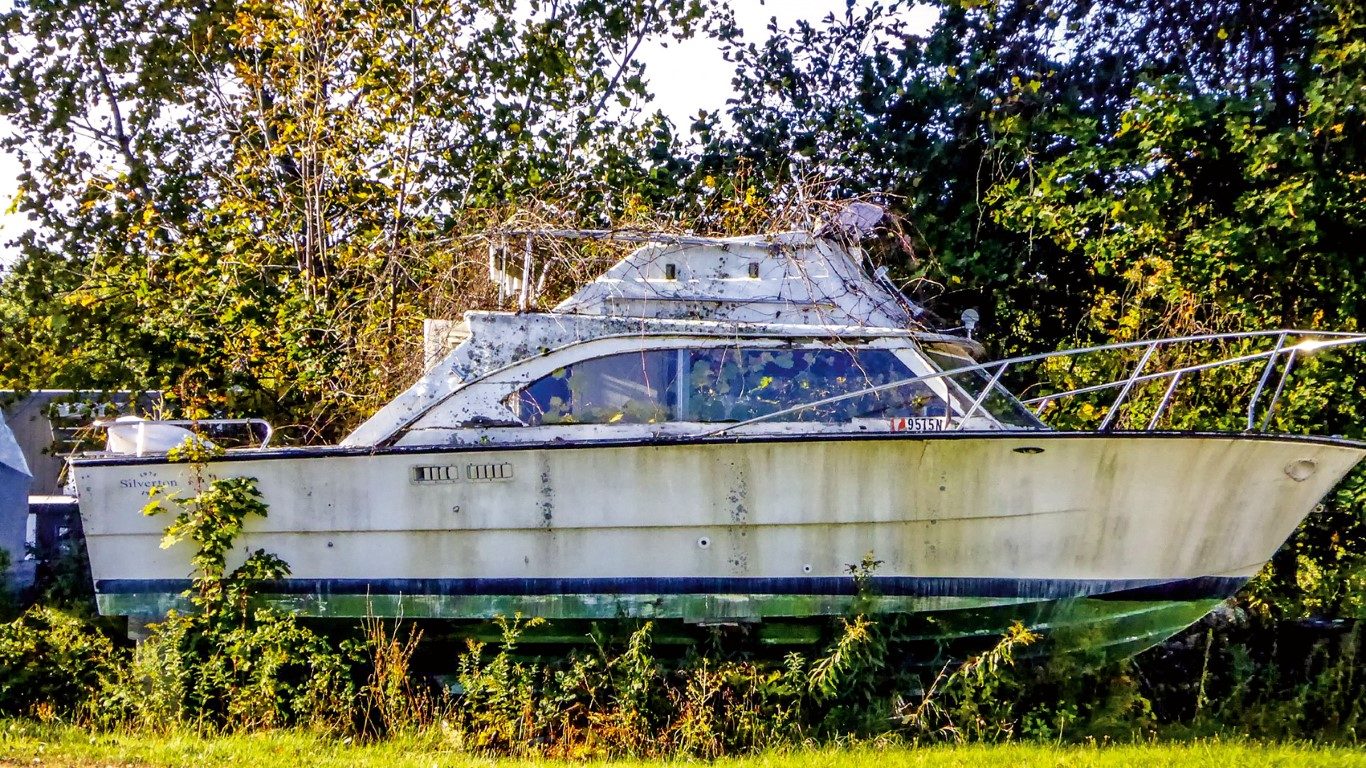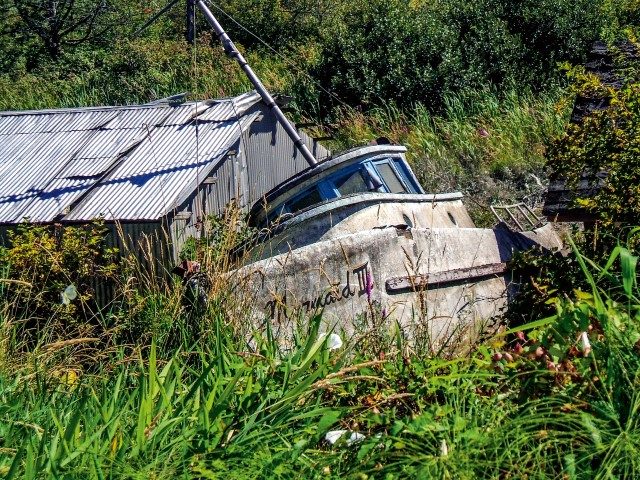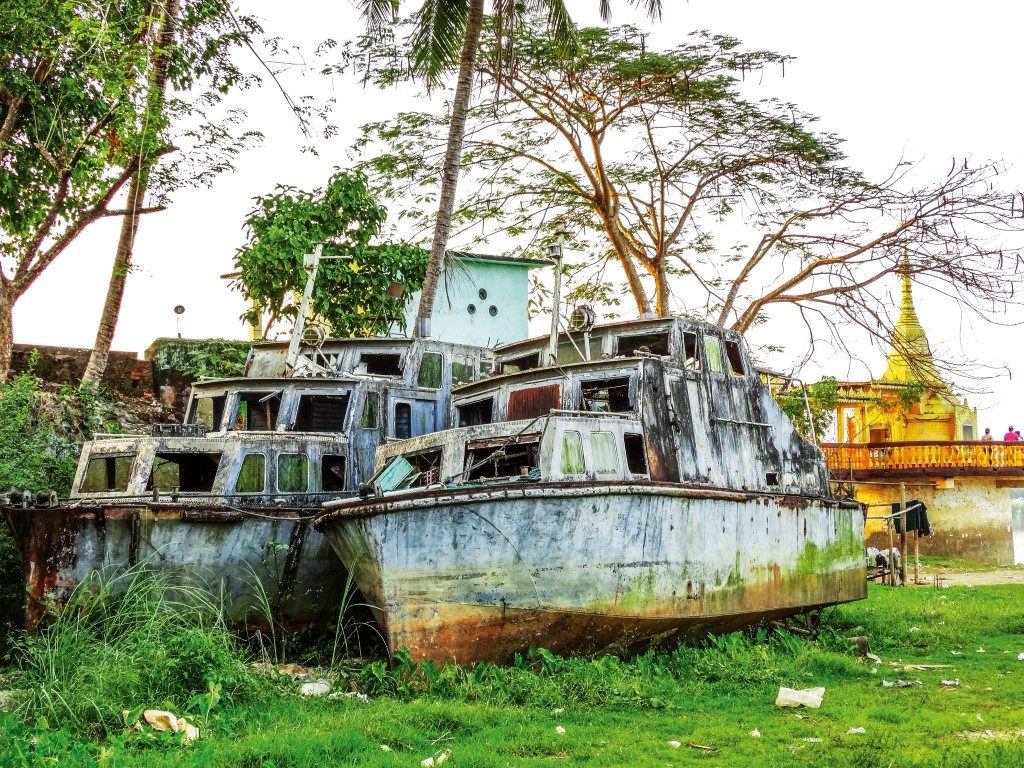

On the other hand, what we’re not good at is figuring out what happens to all of these boats when they come to the end of their lives. If even one percent of those 40 million boats reach end-of-life each year, that’s approximately 400,000 boats headed for landfill. And that figure is only going to increase
when we start to see bigger numbers of boats – the products of the boom years in the 1970s and 1980s, when boats were built in huge volumes – come to their final days. Many of those vessels are now approaching, or exceeding, 40 years of age.
The discussion around end-of-life boats has taken on a new tone over the last few years. From something that simply wasn’t discussed – ever – the disposal of old boats has more recently become the subject of multiple industry conferences and think-tanks, which have all sought to raise awareness of the problem and come up with workable solutions.

The biggest issue is that fibreglass boats simply don’t break down easily for cost-efficient recycling. That being the case, no one wants to touch them because there is simply not enough money to be made in scrapping old boats. Right now, the vast majority of old boats are simply cut up and buried in landfill.
But with literally tens of millions of boats headed for the dump over the next several years, and each hull having the potential to leach a variety of toxic chemicals like formaldehyde into the ground water, end-of-life boats represent a growing problem.
WHO WILL PAY?
Peter Franklin, one of the organisers of the Future of Yacht Recycling Conference held in Amsterdam, says that while boat recycling operations in Japan, Sweden, Canada and France have met with varying levels of success, it will take a more concerted effort to make boat recycling a profitable proposition on a global scale.
“Right now, no one is making any money at this,” says Franklin. “But by sharing our collective knowledge and focusing attention on the situation, the hope is that we can develop ways of recycling fibreglass boats more economically.”
The question of who should pay to dispose of old boats isn’t easily answered, but it’s a question the boating industry would be wise to tackle before government regulatory agencies elect to answer it for them. In France, a new federal Eco Tax specifically created to fund the disposal of end-of-life boats came into effect on January 1, 2018.
“The tax is applied to all recreational water craft, from sailboats to power boats to canoes – all boats up to 24 metres in length,” says Pierre Barbleu, manager of France’s APER Network. “There is a high cost to dismantling boats, and no one wants to pay. So, the government has decided who will.”
The problem with this approach, says Barbleu, is that the number of old boats in the pipeline grossly outweighs the number of new boats being sold. “There are boats now coming to the end of their life from over the past 40 years,” he says. “But today fewer people buy boats so the cost, proportionally, is going to be higher than it should be. Now the tax will make getting a boat even more expensive and discourage new people from becoming interested in boating. It’s going to hurt everyone.”
BOATS AS MATERIAL BANKS
For generations, boats have been produced following a linear, ‘cradle-to-grave’ economic model of build, use, and dispose. While this may have been fine in the days when wood was the primary boatbuilding material, the adoption of fibreglass changed everything. The two main issues are the environmental considerations of dumping huge quantities of fibreglass into landfill, and the lost value of potentially reusable materials.
Steven Beckers, president of the Brussels-based Lateral Thinking Factory, says that boats should be designed following a circular model instead, one which includes provision for being recycled at the end of their life.
“Materials should be used, not consumed,” says Beckers. “We need to think of products like boats as raw material banks for the future. Materials appreciate in value over time. Designing boats with an eye to their eventual deconstruction will allow boats to retain greater value at every stage of their life, including the end of it.”

Beckers advocates a circular economic model, which follows a ‘cradle-to-cradle’ concept of build, use, then recycle into something else. He contends that the cost of recycling boats can be dramatically reduced if they were designed from the outset to be easier to deconstruct. Because recyclable materials retain some residual value through the boat’s life, he says a boat’s initial acquisition cost can be partially offset by the future value of its recyclable content.
Beckers likens it to commercial ships, which retain considerable value as scrap metal even after they’re no longer fit to go to sea. “Recreational boat builders need to adopt this way of thinking,” he says. “Because with the present way of doing things there is too much waste, and it costs everybody too much money.”
In the auto industry, the concept of retained value at end-of-life has been embraced for years, allowing dealers to profitably accept end-of-life vehicles on trade knowing they can be subsequently resold at wholesale for scrap. Not only do the metal components retain value as scrap material, but so do the plastic and fibreglass parts.
American automaker General Motors helped develop fibreglass recycling technologies back in the 1970s, when the material was first introduced in its Corvette sportscar. Today, fibreglass auto parts are profitably shredded into fibreglass slivers with multiple uses, including serving as a non-corrosive substitute for traditional iron rebar in certain types of concrete.
Fibreglass can be recycled to make other fibreglass products– including boats. Ryds Battindustri AB, Sweden’s largest boatbuilder, began experimenting with fibreglass recycling about 10 years ago. While its efforts were put on hold by the 2008 economic downturn, the company has since produced prototype boats built with up to 20 percent recycled fibreglass content. It hopes to bring the technology to its production models.

Beyond the potential for increased profits, Peter Franklin sees the need to develop a recycling protocol as being essential to the long-range profitability of the boat industry. “Boatbuilders need to pay attention to this issue, because the next generation of buyers, the next big demographic group of consumers, are more environmentally-aware than any that have gone before them,” says Franklin. “Boat manufacturers who produce environmentally-sustainable, recyclable products will be seen positively, while a lack of recyclability will reflect badly on the others.”
With growing numbers of old boats soon coming to the ends of their lives, the boating industry faces what can only be described as a looming environmental problem, and one with the potential to become a public relations quagmire. Taking a leadership role now in making the industry more environmentally sustainable can only benefit manufacturers and dealers alike, while simultaneously providing a long-term solution to the growing problem of end-of-life boats.




